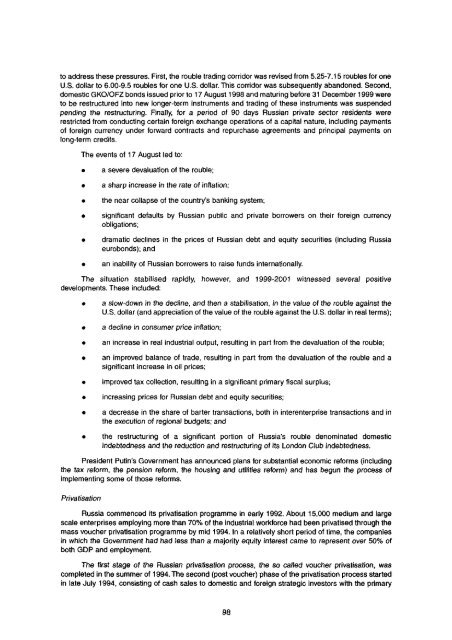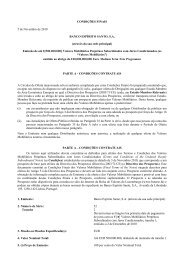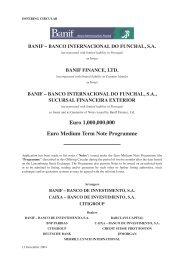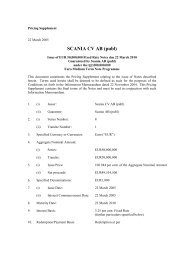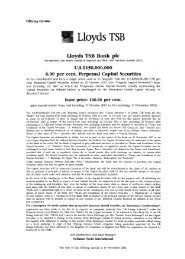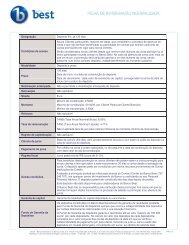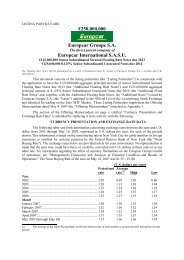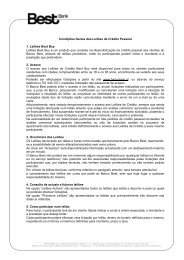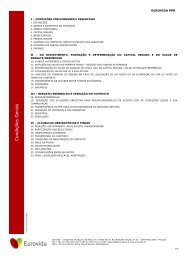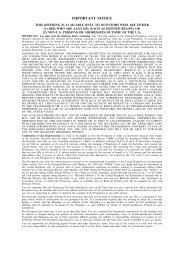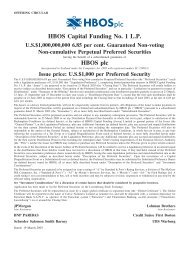Open Joint Stock Company Gazprom
Open Joint Stock Company Gazprom
Open Joint Stock Company Gazprom
Create successful ePaper yourself
Turn your PDF publications into a flip-book with our unique Google optimized e-Paper software.
to address these pressures. First, the rouble trading corridor was revised from 5.25-7.15 roubles for oneU.S. dollar to 6.00-9.5 roubles for one U.S. dollar. This corridor was subsequently abandoned. Second,domestic GKO/OFZ bonds issued prior to 17 August 1998 and maturing before 31 December 1999 wereto be restructured into new longer-term instruments and trading of these instruments was suspendedpending the restructuring. Finally, for a period of 90 days Russian private sector residents wererestricted from conducting certain foreign exchange operations of a capital nature, including paymentsof foreign currency under forward contracts and repurchase agreements and principal payments onlong-term credits.The events of 17 August led to:• a severe devaluation of the rouble;• a sharp increase in the rate of inflation;• the near collapse of the country's banking system;• significant defaults by Russian public and private borrowers on their foreign currencyobligations;• dramatic declines in the prices of Russian debt and equity securities (including Russiaeurobonds); and• an inability of Russian borrowers to raise funds internationally.The situation stabilised rapidly, however, and 1999-2001 witnessed several positivedevelopments. These included:• a slow-down in the decline, and then a stabilisation, in the value of the rouble against theU.S. dollar (and appreciation of the value of the rouble against the U.S. dollar in real terms);• a decline in consumer price inflation;• an increase in real industrial output, resulting in part from the devaluation of the rouble;• an improved balance of trade, resulting in part from the devaluation of the rouble and asignificant increase in oil prices;• improved tax collection, resulting in a significant primary fiscal surplus;• increasing prices for Russian debt and equity securities;• a decrease in the share of barter transactions, both in interenterprise transactions and inthe execution of regional budgets; and• the restructuring of a significant portion of Russia's rouble denominated domesticindebtedness and the reduction and restructuring of its London Club indebtedness.President Putin's Government has announced plans for substantial economic reforms (includingthe tax reform, the pension reform, the housing and utilities reform) and has begun the process ofimplementing some of those reforms.PrivatisationRussia commenced its privatisation programme in early 1992. About 15,000 medium and largescale enterprises employing more than 70% of the industrial workforce had been privatised through themass voucher privatisation programme by mid 1994. In a relatively short period of time, the companiesin which the Government had had less than a majority equity interest came to represent over 50% ofboth GDP and employment.The first stage of the Russian privatisation process, the so called voucher privatisation, wascompleted in the summer of 1994. The second (post voucher) phase of the privatisation process startedin late July 1994, consisting of cash sales to domestic and foreign strategic investors with the primary98


